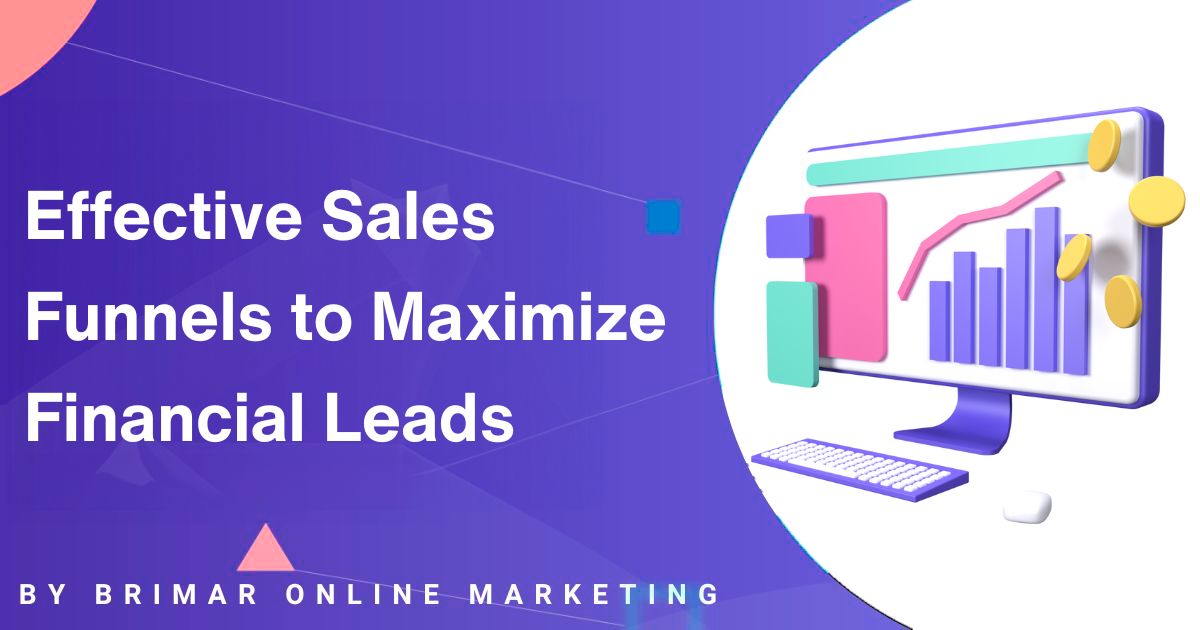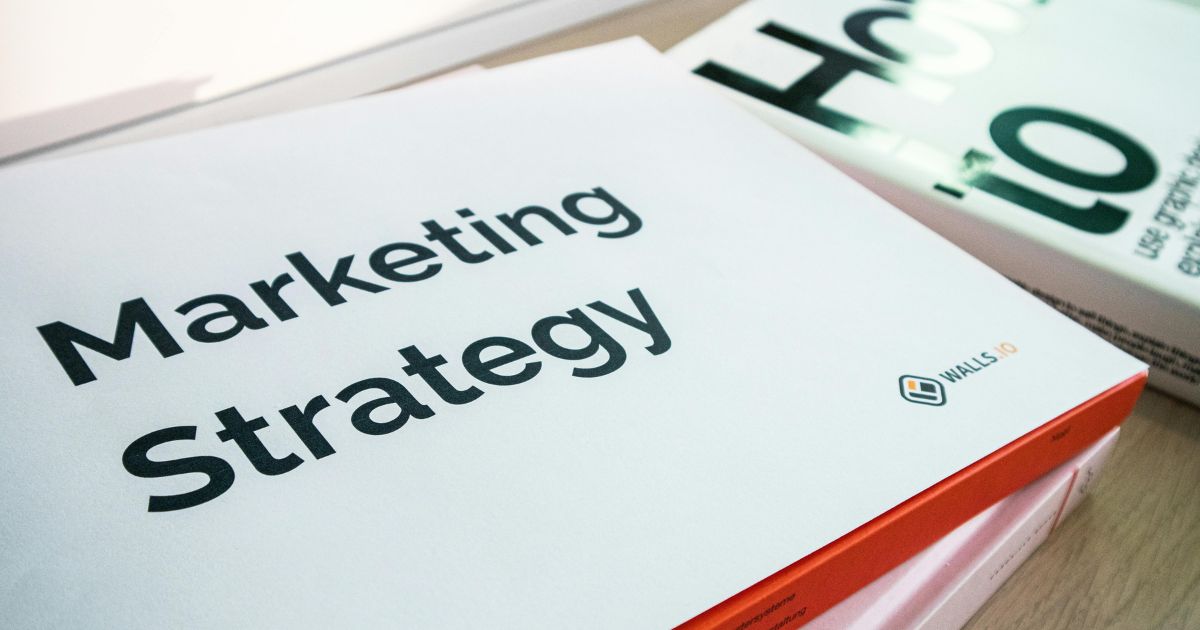
Transforming potential clients into loyal customers is crucial for the growth of any service-based business.
For accounting firms, the ability to convert leads efficiently can set them apart in a competitive market.
By optimizing sales funnels, financial professionals can enhance their client acquisition strategies and boost profitability.
In the financial services industry, lead conversion remains a vital component for success.
Accounting firms, like other service-based businesses, rely heavily on converting potential clients into paying customers to sustain and grow their operations.
This process involves guiding prospects from their initial contact with your firm all the way to final purchase decisions.
Achieving high conversion rates requires a well-structured sales funnel that aligns with the specific needs of your target market.
Digital marketing for accountants plays a pivotal role in creating these funnels by leveraging targeted strategies that attract and engage high-value leads.
Understanding sales funnels
Sales funnels are strategic models used to map out the journey of potential clients as they move from initial interest to final purchase.
These models help businesses understand how prospects interact with their brand and what influences their purchasing decisions.
For financial professionals, understanding the stages of a sales funnel is crucial to tailoring marketing efforts effectively.
Typically, these stages include awareness, interest, decision and action, each requiring different tactics to nurture leads further down the funnel.
The awareness stage involves capturing the attention of potential clients through various channels such as content marketing, social media or advertising.
Once prospects are aware of your services, the next step is to generate interest by providing valuable information that addresses their specific needs or pain points.
As they move towards making a decision, offering personalized consultations or free trials can help convince them of your firm’s expertise and reliability.
Finally, in the action stage, encouraging them to make a purchase or sign up for services completes the conversion process.
By clearly understanding each stage of the sales funnel and its impact on client behavior, accountants can better design marketing campaigns that resonate with their audience.
This strategic approach ensures that efforts are focused on nurturing leads through personalized interactions and relevant content.
Tracking and assessing key performance indicators (KPIs) across your sales funnel is vital for improving conversion rates.
Important metrics to track include visitor-to-lead ratio, lead-to-opportunity conversion rate and overall funnel velocity.
By monitoring these metrics, financial professionals can identify bottlenecks in their conversion process and make data-driven decisions to improve funnel performance.
Regular analysis of these KPIs helps determine which marketing channels are most effective and where potential clients may be dropping off in the conversion process.
Need a Sales Funnel that Converts?
Struggling to turn clicks into customers?
A high-converting sales funnel could be the missing link. We’ll help you build a simple, straightforward, and effective funnel that guides your visitors step-by-step, so they take action, not just browse.
Designing efficient funnels
Creating an optimized sales funnel involves several key components tailored specifically for financial professionals.
One critical aspect is defining your ideal client profile based on factors such as industry sector, business size or specific financial needs.
With this information at hand, you can craft messaging that speaks directly to their concerns and positions your services as solutions to their problems.
In addition to clear messaging, leveraging technology tools like customer relationship management (CRM) systems can streamline funnel management processes.
These tools enable you to track interactions with prospects across different stages of the funnel while providing insights into which tactics are most effective at driving conversions.
Automated email campaigns also play a significant role in keeping leads engaged by delivering timely updates or educational content that builds trust over time.
Furthermore, testing various elements within your sales funnel, such as landing page designs or call-to-action buttons can provide valuable data on what resonates best with your audience.
Through continuous refinement based on analytics feedback, you can improve conversion rates significantly over time while reducing costs associated with ineffective strategies.
Another crucial element in funnel design is implementing effective lead scoring systems.
This approach helps prioritize prospects based on their likelihood to convert, allowing firms to focus their resources on the most promising opportunities.
Lead scoring can be based on various factors such as engagement level, company size, industry type and interaction history with your content.
By assigning numerical values to these criteria, you can automatically identify which leads require immediate attention and which ones need additional nurturing before they’re ready for direct sales outreach.
Mapping the customer journey

Mapping out the customer journey is a fundamental step in enhancing conversion rates within your sales funnel strategy.
By visualizing each touchpoint where prospects interact with your brand from initial contact through post-purchase follow-up, you gain insights into areas needing improvement or opportunities for personalization.
A comprehensive map should include every stage from awareness through advocacy, highlighting moments when potential clients may require additional support or information before progressing further along their journey toward becoming loyal customers.
Identifying these key moments allows you to tailor communications accordingly, whether it’s sending targeted emails at critical decision points or offering webinars addressing common concerns faced by prospective clients.
Additionally, understanding common roadblocks encountered during this journey helps refine processes further.
So they align more closely with client expectations rather than generic assumptions about buyer behavior patterns within broader markets outside the finance sector.
Specifically targeting accountants’ unique challenges faced daily, managing complex tax regulations compliance issues, etc.
Incorporating digital marketing strategies

The integration of digital marketing techniques into your overall strategy provides numerous benefits when it comes to attracting and converting high-value clientele.
Especially in the accounting industry context, where competition is fierce among companies competing for a limited pool of qualified candidates, leads.
Online platforms are increasingly becoming the primary source of new business opportunities, given the rise of remote working practices in the post-pandemic era.
Email marketing remains a cornerstone of effective online engagement, allowing for direct communication with prospects and nurturing relationships gradually, transforming casual interests into genuine intent to buy.
Accountants, concerned about confidentiality and privacy matters, often prefer receiving personalized messages rather than generic advertisements scattered across the web, which indiscriminately reach the wrong audience segments, diluting the effectiveness of outreach efforts.
Moreover, social media channels provide a unique avenue to connect informally with potential clients, sharing success stories and behind-the-scenes glimpses of office culture, building rapport through transparency and authenticity.
This is crucial in establishing credibility and trustworthiness in a profession that inherently involves handling sensitive financial data,
requiring utmost diligence to ensure confidentiality and integrity are maintained throughout the entire lifecycle of client engagement.
While specific case studies are not included here due to restrictions imposed by guidelines, certain general trends of successful implementations have been observed among leading players in the accounting sector.
These showcase innovative approaches leveraging the power of digital transformation processes to enhance lead generation activities.
Ultimately, driving higher returns on investment made in developing comprehensive, multi-channel, integrated marketing plans designed specifically to cater to the evolving demands of a discerning clientele base seeking sophisticated solutions to complex challenges presented by ever-changing regulatory landscapes.
This approach ensures that marketing efforts are aligned with client needs and industry trends.
By leveraging diverse channels and strategic planning, businesses can better navigate regulatory complexities and deliver value to their clients.
The utilization of big data analytics, predictive modeling, and AI-powered algorithms has enabled some firms to achieve remarkable growth trajectories previously deemed impossible with traditional methods alone.
This holistic approach underscores the importance of staying ahead of the curve, adopting cutting-edge technologies to embrace change rather than resisting inevitable shifts occurring in the industry landscape today.
Anticipated developments on the horizon enable a proactive stance rather than a reactive posture, better equipping firms to navigate uncertainties inherent in volatile environments characterized by the rapid pace of innovation across the board, touching virtually every aspect of modern business operations, irrespective of the sector involved at any given moment in time.
Tactics to Attract, Nurture, and Convert High-Quality Leads in Financial Services

To further increase effectiveness, financial advisors must focus on delivering valuable content at every stage of their marketing funnel.
This begins at the top of the funnel, where blog posts and social media platforms can be used to attract potential customers and build awareness.
Creating engaging lead magnets, such as downloadable financial planning checklists or investment guides, is one of the best ways to capture email addresses and contact information.
This allows firms to grow their email list with qualified leads who are actively seeking financial guidance.
Once leads enter the funnel, nurturing becomes key.
Offering free consultations or webinars can move prospects from the consideration to the decision stage.
These interactions build trust and allow financial professionals to demonstrate expertise and address specific concerns.
For financial advisors targeting high-net-worth individuals, personalized outreach and exclusive content can be particularly effective in converting new clients.
It’s also critical to incorporate A/B testing throughout the sales process.
From landing page headlines to call-to-action buttons, testing variations helps identify what resonates best with the target audience.
This data-driven approach ensures that each step in the marketing funnel is optimized for maximum impact.
Social proof plays a major role as well. Showcasing testimonials or success stories from satisfied clients can influence hesitant leads by reinforcing credibility and competence.
Including quotes, video clips, or metrics can make these endorsements even more persuasive.
Finally, maintaining a consistent content strategy through regular blog posts and emails not only keeps your brand top-of-mind but also builds long-term loyalty within your client base.
Each interaction should bring value, whether that’s through insightful financial planning tips or updates on market trends.
When done right, an effective sales funnel becomes a scalable system for turning strangers into lifelong clients.
Our Digital Marketing Services Have Helped Our Clients Increase Their Revenue!
“I highly recommend Brimar if your looking to grow your online business. You will be satisfied with the high level of expertise and high quality of services. It has helped my business grow by leaps and bounds.”
CEO
